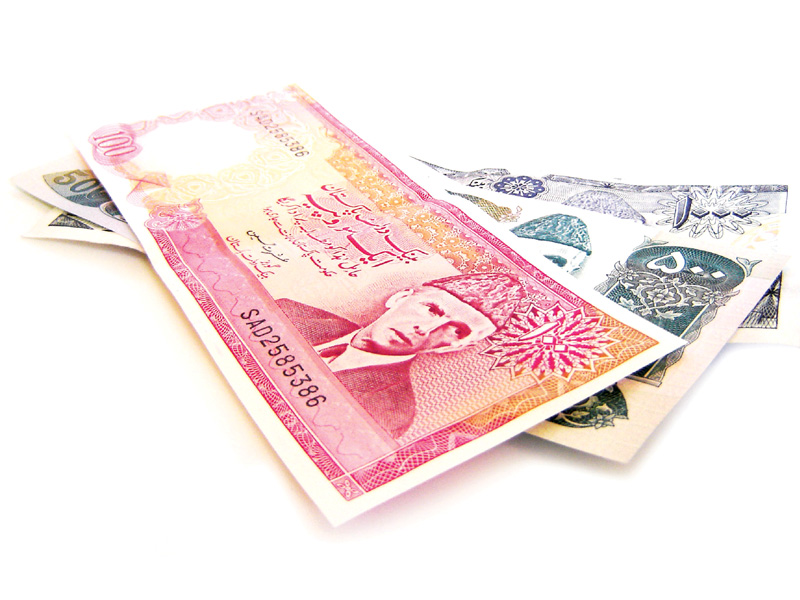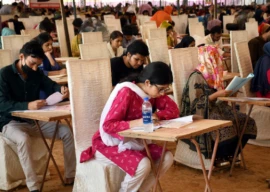
So far, Pakistan has repaid $2.57 billion — including the $145.79 million payment on January 11 and is scheduled to repay another $375 million on February 26.
According to the State Bank of Pakistan, foreign exchange reserves have declined to $8.7 billion as of January 31 from $10.8 billion at the end-June 2012. The IMF has also said that foreign exchange reserves under $10 billion were below adequate levels.
The rupee has recovered slightly from its dip below 100 but it is going to stay under pressure for the foreseeable future and may even set a new record low. The only saving grace is that overseas Pakistani workers have so far remitted $8.21 billion in the ongoing fiscal year, a growth of 10.4 per cent year-on-year. But even this has not been able to save forex reserves from dwindling and registering a 20 per cent decline this year.

The mood of the State Bank of Pakistan, as deduced from the Monetary Policy announcement, is that it won’t be as willing to pump liquidity into the market to prop up the rupee as it has been up till now.
As it is, the fiscal year, so far, has been the worst in a long time. Pakistan rupee depreciation, which fell by 7.8 per cent in 2012 against the US dollar, is higher than most of its peers in the region, as the Indian rupee is down 3.7 per cent against the dollar, while the Bangladeshi taka gained by 1.8 per cent.
The depreciation in the rupee is much worse than the 20-year average decline of 6.2 per cent and the 10-year decline of 3.2 per cent.
There is also pressure from the IMF to devalue the rupee further, saying that it is still over-valued by about five per cent. If the government gives in to that theory, assuming it wants to do whatever is necessary to bring the Fund to the negotiating table, the worst is far from over.
Published in The Express Tribune, February 14th, 2013.
COMMENTS (9)
Comments are moderated and generally will be posted if they are on-topic and not abusive.
For more information, please see our Comments FAQ








1730379446-0/WhatsApp-Image-2024-10-31-at-17-56-13-(1)1730379446-0-270x192.webp)


1735025557-0/Untitled-(96)1735025557-0-270x192.webp)











@John the Baptist: You have changed your moniker from Sultan to John the BAptist. But the quality of your arguments stinks as much as before. Attack everyone without saying what you disagree with - their facts or logic.
fyi- Asad Umer respects Meekal saab enough to consult him and take his advice onboard. When is the last time, he consulted you for your common sense?
@meekal a ahmed:
Mr. Economist with Super Ego, everyday Pakistani does not buy food items, fuel, etc. with REER; it uses the plain old Rupee, which is declining in value. Perhaps it is time we get rid of the one handed, useless economists and use some common sense!
Ahem, Mr Editor, there is the little problem of the REAL Effective Exchange Rate (REER).
That is the nominal rate, adjusted for relative inflation differentials, using weights of our trading partners and competitors.
I agree that this kind of data is not easy to come by. So one need's to be cautious in drawing banal conclusions.
Please employ some good economist who can explain that to you before you write these trite articles on a subject that you do not understand.
Looking at the nominal exchange rate of other countries (unadjusted by their relative inflation differentials) makes NO sense.
If the IMF says that the rupee is over-valued, they are talking about the REER.
@islooboy: A devalued currency for exports does mean that one is devaluing the labour. you are selling the labour cheap.
@Roni: indian talk as usual devalued ruppee is more competitive in export thus a an added incentive to the bussiness community but it will cause problem for middle class consumer
Borrowing more from IMF might help reducing the debt.
The modern world should leave Pakistan alone as many Pakistanis do not like the west anyway. Once Pakistanis would realize that their favorite friends S. Arabia, China, UAE are not going to give them anything it would open their eyes. It would also leave the army and civilians to slug it out for the small resources. Pakistan has to make cuts drastic cuts in its defenses.
The SBP did intervene in the forex market. It brought out a new policy limiting FX selling prices to 25 paisa above buying prices. That is what led to drop below Rs. 100. So now you have a buying price of Rs. 99 and a selling price of Rs. 99.25. The immediate impact is the drop in price but in time it may lead to increased activity in the black market.
"There is also pressure from the IMF to devalue the rupee further, saying that it is still over-valued by about five per cent. If the government gives in to that theory, assuming it wants to do whatever is necessary to bring the Fund to the negotiating table, the worst is far from over".
It is unlikely that IMF will negotiate until the new elected government takes office which is at least 3 months away. By that time rupee most likely will depreciate by the 5% on its momentum. In any case the 5% depreciation of rupee is likely to be least of the problem when dealing with IMF. The bigger issues are
fixing the fiscal deficit which is a yawning 8.5% of GDPwhich leads to crowding out of capital for the Pakistani businessmen and inabiity to invest in the social sector,
addresing the circular debt which prevents investments in the energy sector and
reversing the capital flight which will not be possible wihtout addressing the root cause i.e. a horrendous law and order situation.
Already it appears that the remittances have slowed down in the last couple of months even though the average of 7 months is higher compared to the same period last year. Secondly imports are undergoing forced contraction due to forex unavailability. Perhaps the oil imports on which Pakistan electricity generation depends are not yet impacted but at some point they will be. The reforms are needed because they are necessary for Pakistan's survival and not because IMF wants them.